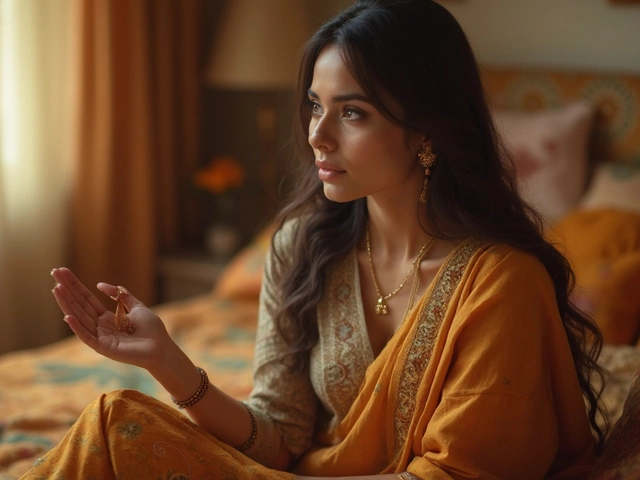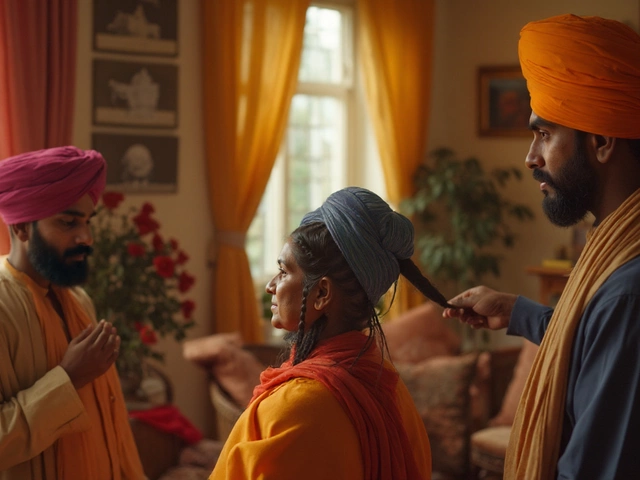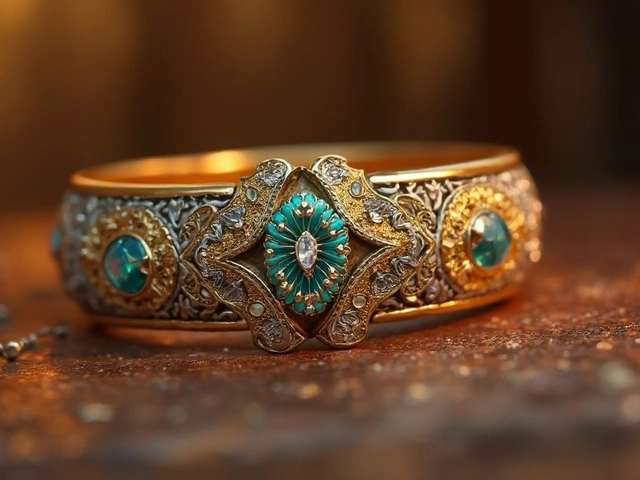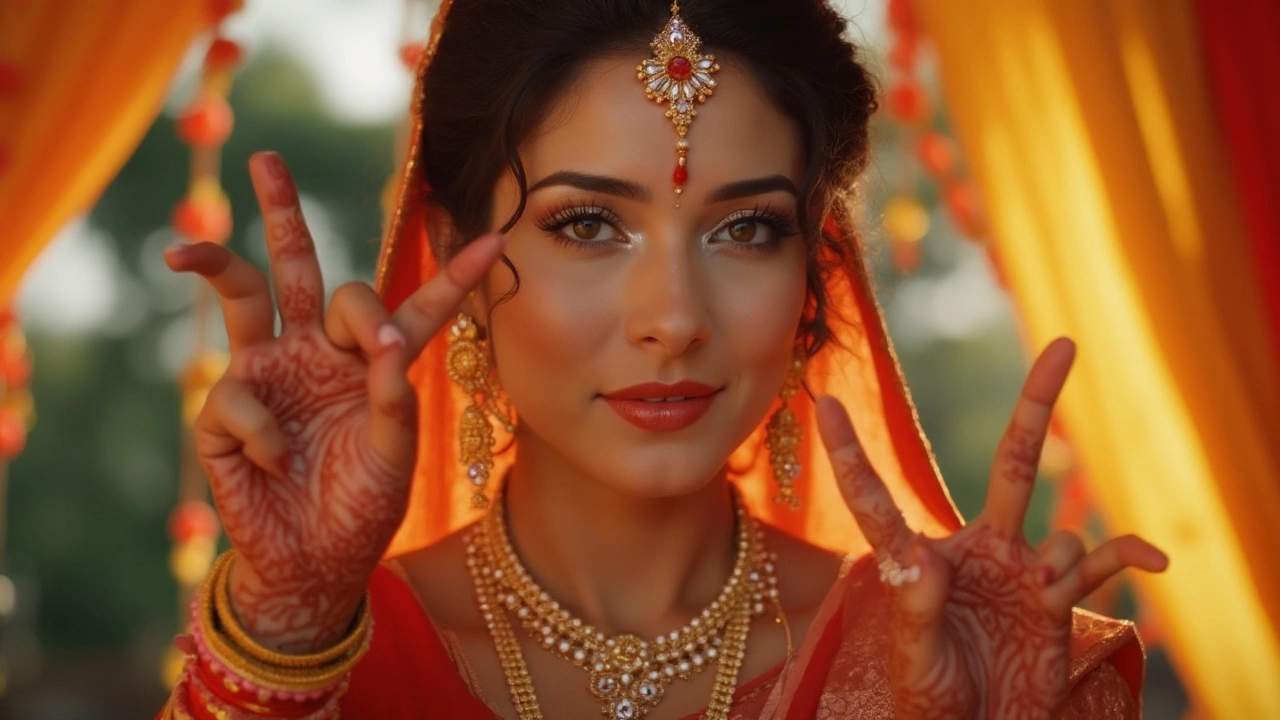
The mangalsutra holds a special place in Indian matrimonial traditions. But beyond its cultural symbolism, it has morphed into a fashionable piece that reflects personal style and modern trends. While traditionally, it was an integral part of Indian weddings, its appeal now stretches beyond its original roots.
Today, the buyers of the mangalsutra are not just those engaged in traditional marriages. Increasingly, modern brides seek designs that align with contemporary fashion, blending tradition with modern aesthetics. As this piece of jewelry evolves, understanding who buys it, and why, can provide insights into its enduring significance.
Origin and Significance
The mangalsutra, a customary component of a Hindu marriage ceremony, is steeped in a tradition that traces its roots back thousands of years to Vedic culture. It serves as a sacred thread of love and goodwill worn around the neck by married Hindu women. Historically, the term 'mangalsutra' is derived from the Sanskrit words 'mangal,' meaning auspicious, and 'sutra,' meaning thread. The wearing of this piece is imbued with deep cultural significance as it represents the marital status of a woman and signifies her union with her spouse. This customary practice is predominantly prevalent among Hindu communities, although similar traditions can be observed in various forms across different South Asian cultures.
The design of the mangalsutra comprises a black beaded chain, traditionally made of gold, often interspersed with black glass beads or other precious gems. The belief behind using black beads stems from the idea of warding off evil spirits and ensuring the well-being of the husband. In essence, the mangalsutra serves not just as an ornament but as a talisman of protection and love. As customs evolved, regional variations came into existence, where each design told its own tale of local customs and artistry. For instance, the Maharashtrian style features intricate pendants and patterns, while the South Indian version often includes sacred symbols like coins or religious icons.
"The mangalsutra is more than a conventional piece of jewelry. It is a symbol that transcends generations, uniting the sacred and the societal in one delicate piece," notes A. Uma Maheswari, an expert in South Asian cultural studies.
In the past, the giving of a mangalsutra was a practice revered as a gesture of a groom's promise to the bride. This promise of companionship and security is metaphorically strengthened by this ornament. Fascinatingly, in some regions, the length of the thread and its specific number of beads are meticulously chosen under religious guidelines, highlighting the devout care placed in its creation. In Tamil Nadu, the concept of 'thali' as a regional variant also signifies a similar marital bond, showing how the symbol bridges cultural nuances.
Modern-day interpretations of the mangalsutra challenge the boundaries of traditional design while respecting the cultural roots. As a marker of marital customs that date back to 6th century A.D., the mangalsutra continues to be revered throughout the subcontinent. In a world where marriage traditions are evolving, the essence of the mangalsutra's symbolism remains unwavering, speaking volumes about its origin and significance. Embracing both modern aesthetics and traditional values, the mangalsutra stands as a vibrant testament to the institution of marriage, cherished by many generations.
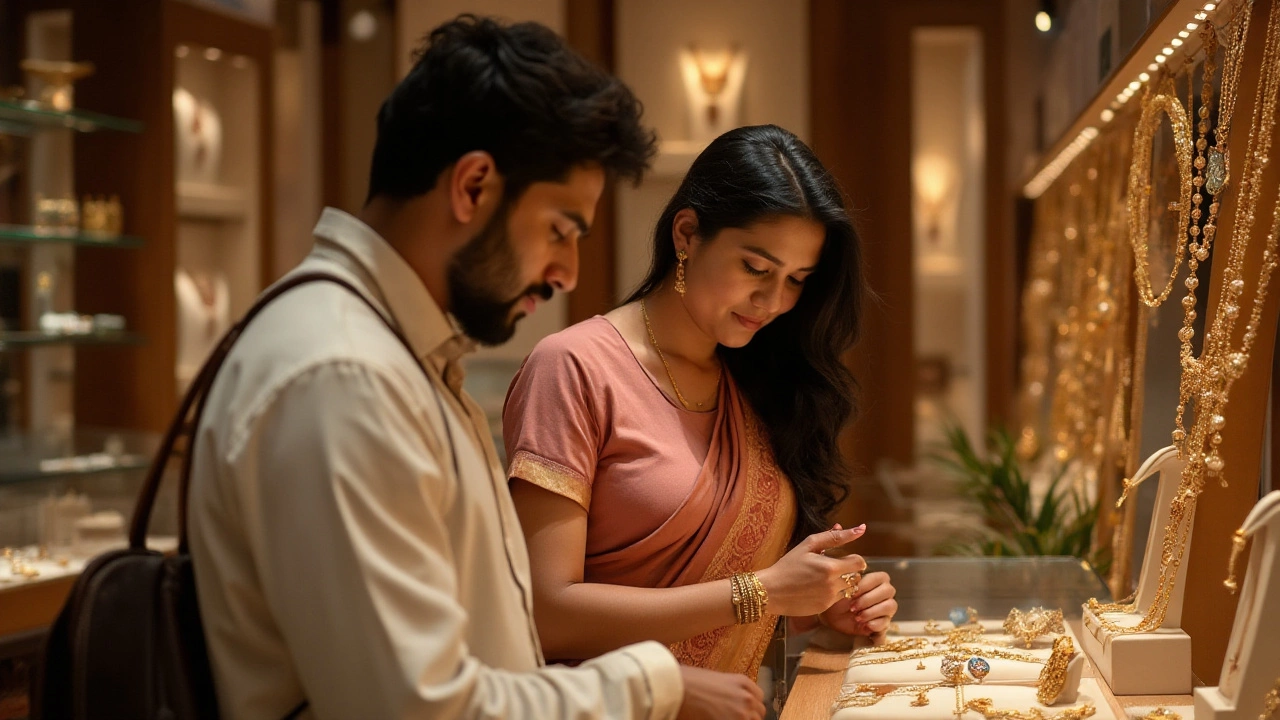
Modern Trends in Design
The world of mangalsutra design has witnessed a significant transformation, capturing the essence of modern aesthetics while maintaining its profound traditional significance. This evolution in design caters to the new-age bride seeking both style and heritage. The traditional heavy black-beaded necklaces with gold pendants have become sleeker, more sophisticated, and uniquely customizable, reflecting personal tastes and preferences. Many jewelers note that today's buyers are looking for versatility; they want a piece that is not limited to special occasions but can also complement casual attires, bridging the gap between tradition and contemporary fashion.
Materials used in mangalsutra designs have also diversified. While gold remains a staple, the use of diamonds, platinum, and colored gemstones has skyrocketed, attracting those seeking elegance and minimalism. One fascinating trend is the increasing demand for single-strand designs rather than the traditional double-strand. This not only makes the mangalsutra lighter but also more adaptable to various outfit styles. Some designers have even ventured into experimenting with different chain patterns, including those inspired by western jewelry trends, which adds an international appeal to these time-honored pieces.
"The modern bride doesn’t shy away from mixing tradition with personal style,” notes Mumbai-based jewelry designer Ananya Khanna, emphasizing the shift towards unique, personal expression through jewelry.
Innovation doesn’t stop at materials and styles; personalization is becoming a buzzword in the world of mangalsutra design. Jewelers now offer custom engravings, initials, and even diamond-encrusted zodiac signs integrated into the pendant, turning the mangalsutra into a deeply personal artifact. Tech-savvy customers value the practicality of these choices, as they can seamlessly transition from formal to everyday wear without a hint of incongruity. Moreover, the ability to engage with designers via digital platforms has democratized access to bespoke jewelry, allowing brides from around the world to embrace these modern interpretations.
Statistics from India's jewelry market reflect this surge in demand for modern mangalsutras. According to recent data, there’s been an approximately 20% increase in sales for diamond-studded options over the past five years as more women gravitate towards these chic, enduring pieces. With these evolving trends, it's evident that the mangalsutra is not just a symbol but a fashion statement, a testament to how traditional values can coexist with modern designs. This arena of design keeps expanding, promising endless possibilities for expression and identity for those who choose to wear them.
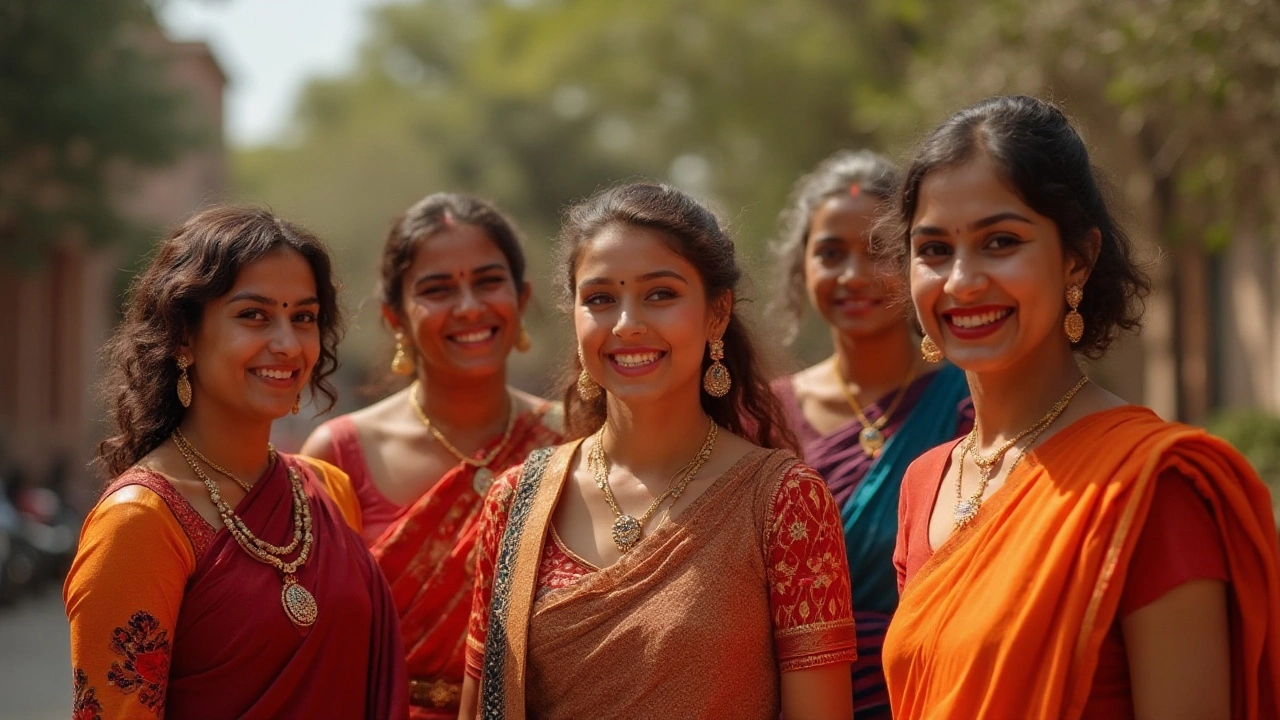
Who Buys It Today?
In today’s world, the audience for the mangalsutra is more diverse than ever before. Traditionally, this ornate piece of jewelry was solely the domain of Indian brides, a vital accessory signaling marital status. But today the demographic has expanded to niche groups across different cultures and backgrounds, drawn in by its beauty and symbolic depth. Interestingly, while the traditional Indian bride remains a key buyer, there's been a notable shift toward a wider audience who appreciate it for both fashion and sentiment.
The first group worth mentioning are the modern Indian brides who blend tradition with contemporary style. They often look for designs that exhibit modern flair but still hold that deep cultural essence. Gold remains a timeless choice, but there are variations with diamonds, pearls, and other gemstones that add a personal touch. This creates an elegant balance between age-old customs and individual expression.
"For many young couples today, a mangalsutra is as much about personal expression as it is about tradition," says jewelry expert Rina Malik.Interestingly, this fusion of styles attracts not only local brides but also those in the vast Indian diaspora who wish to hold onto their heritage.
Then, you find an array of collectors and connoisseurs who purchase mangalsutra designs for their intricate craftsmanship. Some are captivated by the rich history and stories encapsulated in each piece, while others are simply admirers of fine workmanship. Connoisseurs might not necessarily wear them but treasure these jewels as part of a collection that offers a glimpse into the past. Museums and cultural institutions often fall into this category, acquiring pieces to showcase India's rich artistic traditions.
Another growing segment is that of fashion-forward individuals who are neither married nor Indian but have embraced the piece as a versatile accessory. You'll find them adorning their western outfits with minimalist, aesthetically pleasing designs that have a contemporary flair. This group looks for mangalsutra versions versatile enough to be worn as everyday jewelry without the traditional identity associated with marriage, highlighting another layer of cultural diffusion.
Finally, there's the gift market. Mangalsutras are sometimes chosen as unique, meaningful gifts among friends or family. They might be a thoughtful token to mark a significant life event or just as a beautiful piece of jewelry that carries a sense of tradition and style. For those buying gifts, the choice often leans toward designs that have a modern touch but retain an element of cultural acknowledgment.
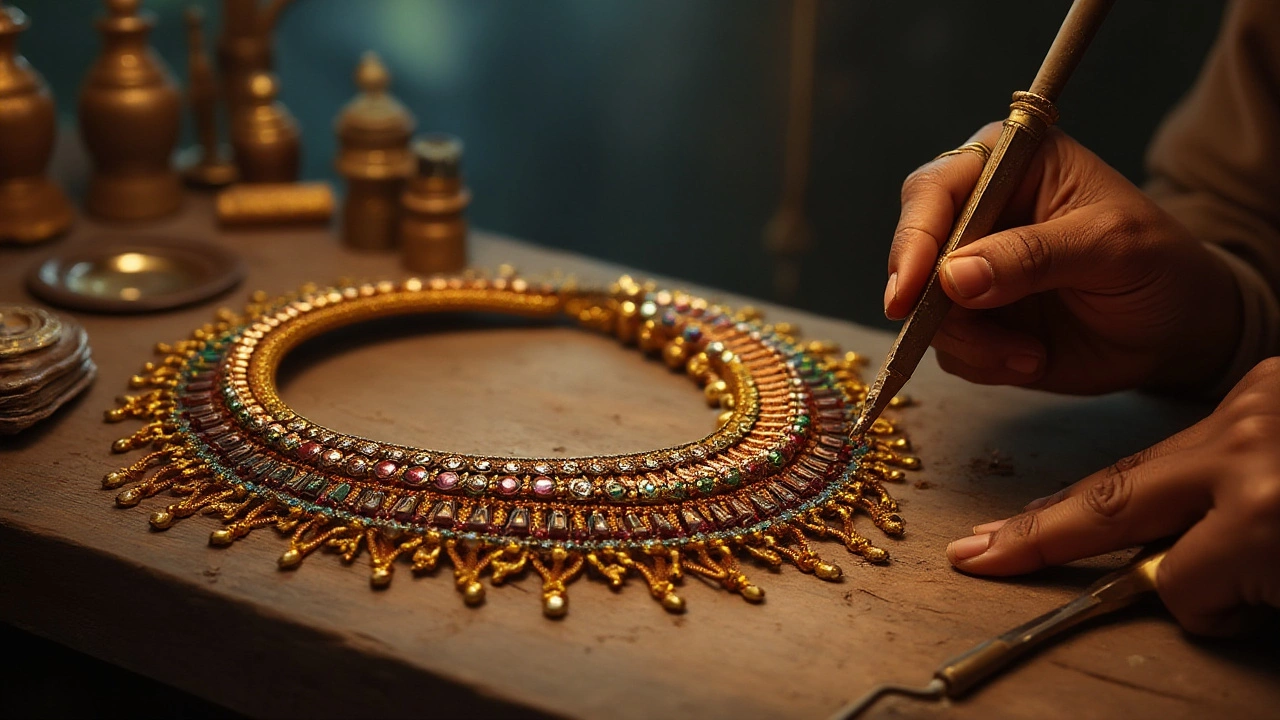
Tips for Choosing a Mangalsutra
Choosing a mangalsutra can be as intricate and meaningful as selecting a wedding gown or engagement ring. The decision involves more than just picking a beautiful design; it encompasses tradition, personal significance, and practicality. Whether you're drawn by its traditional roots or its modern allure, the right mangalsutra marks a connection that stretches beyond its own delicate chain. Start your journey with understanding its historical significance. Knowing that this item symbolizes a sacred bond in many cultures brings a deeper appreciation to the one you will eventually wear. It also represents the richness of blending age-old customs with contemporary fashion statements. You are not just wearing an ornament; you are embracing a piece of art steeped in history and culture.
While tradition remains an essential factor, modern trends have introduced a plethora of designs to suit varied tastes. Minimalist designs for everyday wear, intricate pieces for special occasions, and bespoke options showcase how this ornament can be both versatile and personal. Consider your own style and how often you plan to wear your mangalsutra. Will it be a constant companion, or reserved for significant occasions? This choice influences whether you opt for an elaborate design or something more understated. Contemporary brides often prefer flexibility, choosing designs that seamlessly transition from a workplace setting to a grand celebration.
In an article by Vogue India, jewelry designer Anita Dongre stated, "A mangalsutra is a statement on its own. Each design tells a story—whether traditional or modern, it is a reflection of one's personal journey."
Quality cannot be overstated. Invest in materials that stand the test of time like gold or platinum, ensuring durability without sacrificing elegance. While the traditional mangalsutra uses black beads intertwined with the chain, recent trends incorporate diamonds and other precious stones, making your decision both exciting and complex. It's pivotal to certify these stones to avoid disputes about authenticity later on. Many modern jewelers offer certified stones, adding an extra layer of trust to your purchase. Comparable costs between traditional and modern designs should also be considered, weighing the pros and cons of each material without compromising on the symbolic essence of your choice.
Budget is another important consideration. The market offers a range of prices, giving you flexibility regardless of your financial situation. Setting a budget beforehand can help narrow down options and allow you to focus on designs that best suit you. Always keep in mind that a higher price doesn't always equate to superior quality, but often reflects the intricacy of the design and the rarity of materials used. Often, visiting several jewelers and comparing their offerings can yield the perfect balance of price and quality, granting you confidence in your eventual choice. Remember, the emotional and cultural value of a mangalsutra extends beyond its monetary cost, anchoring you to your roots while accentuating your individual flair.
Consider bespoke options if personalization is paramount. Many jewelers offer custom designs allowing you to infuse your personal touch into this traditional piece. Whether incorporating gemstones with a particular significance or adjusting the length to suit your neckline, bespoke creations can elevate your connection to the mangalsutra. It becomes uniquely yours, a symbol not only of marital union but of personal identity. Wear it with pride, knowing that it is made just for you and encapsulates personal narratives alongside cultural heritage. Choose a jeweler who understands your vision and translates it into reality, ensuring the final piece resonates with both tradition and trend.
